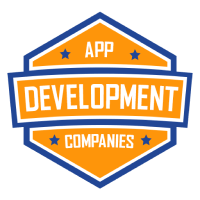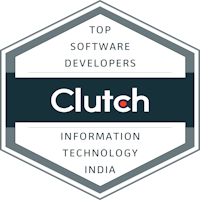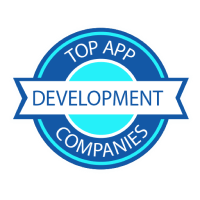Effective data management is essential for creating reliable and scalable systems in the changing world of software development. Here we have the programming world’s superheroes: ORMs (Object-Relational Mapping).
By bridging the gap between database users and software programmers, ORMs make data manipulation and retrieval easier. Software developers’ jobs are made simpler by ORMs like Hibernate, Entity Framework, and SQLAlchemy by offering a higher-level abstraction layer, allowing them to concentrate on what they do best: creating code. We’ll go into the intriguing realm of ORMs in this post, examining how they operate and the advantages they have for the development process.
So, gear up and get ready to unlock the secrets behind ORMs and discover how they revolutionize software development with their magic spell of simplicity and efficiency.
What is Object-relational Mapping (ORM)?
Object-relational mapping (ORM) is a layer that converts our data between databases and object-oriented entities using the object-oriented programming (OOP) language.
Any database management system where object mapping to the table may be accomplished in the virtual system is capable of supporting ORM implementation. There are many different kinds of ORM languages, including SQL Alchemy, Django ORM, Dapper ORM, and JOOQ ORM.
Features Comparison in ORMs
Language Support:
Consider which programming languages the ORM framework supports. Whether you’re using Java, C#, Python, or Ruby for the project, make sure it’s compatible with the programming language.
Database compatibility:
Determine whether different database management systems (DBMS) like MySQL, PostgreSQL, Oracle, or MongoDB are compatible with each other. Make sure the ORM is compatible with the particular DBMS you want to use.
Querying Capabilities:
Compare the ORM’s querying capabilities, including flexibility in building complicated queries and support for various query languages (SQL, JPQL, LINQ). Look for options for complex sorting, filtering, and pagination.
Performance:
Evaluate the ORM’s performance traits, including query execution times, cache setups, and huge dataset handling optimizations. Think about things like eager loading, slow loading, and query performance tuning.
Relationship Mapping:
Look at how the ORM manages connections between database entities or tables. Look for complicated association support, cascade operations, fetch techniques, and one-to-one, one-to-many, and many-to-many relationship support.
Concurrency control and transaction management:
Assess the ORM’s ability to manage concurrency control and transaction management. As well as optimistic and pessimistic locking methods, look for characteristics like atomicity, consistency, isolation, and durability (ACID).
Migrations and Schema Management:
Take a look at how the ORM can manage database schema changes, including migrations, versioning, and automated schema updates. As your application changes, the database structure will develop smoothly as a result.
Community and Documentation:
Evaluate the level of community support for the ORM as well as the accessibility of thorough documentation, tutorials, and examples. Effective problem-solving and framework learning may be considerably aided by a robust community and well-documented resources.
Integration with Frameworks and Libraries:
Determine whether the ORM interfaces effectively with common frameworks and libraries in your technological stack. For instance, make sure the ORM integrates seamlessly with any web framework you use, such as Spring, Django, or Ruby on Rails.
Active Development and Maintenance:
Consider the ORM’s development activity, the frequency of updates, and the development team’s response time to requests for bug fixes and new features. An ORM that is actively developed and maintained is more likely to get updates and maintenance over time.
Performance Comparison in ORMs
Query Execution Time:
Assess the ORM’s database query execution speed. For typical operations like obtaining records, joining tables, and data filtering, look for benchmarks or performance tests that track the time it takes for a query to execute. Think about how effective the ORM’s query generation and optimization methods are.
Caching Mechanisms:
Examine the caching capabilities of the ORM for enhanced performance. Look for features like entity caching, second-level caching, or query result caching. By accessing data from cache memory rather than the database, these technologies can decrease the amount of database queries and speed up response times.
Lazy Loading and Eager Loading:
Analyze the ORM’s handling of the loading of related data in light of the concepts of lazy loading and eager loading. While eager loading collects all associated data in advance, lazy loading just obtains related data when it is requested. Examine the effects of each strategy on performance and strike a balance between lowering database queries and memory use.
Connection Management:
Examine the ORM’s connection management practices for managing database connections. By reducing the overhead associated with creating and terminating connections, effective connection pooling strategies can have a considerable influence on performance. Look for features that minimize latency, maximize connection utilization, and gracefully manage connection timeouts.
Batch Processing:
Consider batch processing, which the ORM supports and enables the execution of several database operations in a single round-trip. By minimizing network overhead and lowering the number of database requests, batch processing may significantly enhance speed.
Indexing and Optimization:
Consider how well the ORM makes use of database indexes and streamlines query execution strategies. Look for features like the capability to set custom indexes or automated indexing recommendations. Effective indexing techniques can improve query speed by reducing complete table scans and increasing the effectiveness of data retrieval.
Data Caching and Object Identity:
Examine the ORM’s method for storing data objects in the cache and object identity. The ORM can effectively access and change objects without needless database queries thanks to effective object identity management. Compare how the ORM manages object caching schemes and cache synchronization.
Scalability:
Take into account the ORM’s capacity to increase as data volumes and user loads do. Analyze its performance in high concurrency situations to see if it can manage growing workloads without noticeably slowing down.
Database Compatibility:
Evaluate the ORM’s performance with regard to various database management systems (DBMS) and determine how well they work together. Some ORMs may run better with particular DBMSs as a result of improved query creation or particular optimizations for that database technology.
Benchmarking and Actual Case Studies:
Look for case studies and performance benchmarks that show the ORM’s effectiveness in real-world settings. Compare your exact performance requirements to the performance metrics attained by other apps or projects that have used the ORM.
Conclusion:
ORM frameworks offer numerous benefits such as increased productivity, code reusability, and maintainability. They are widely adopted by software development company. Hire dedicated software developers to build robust and scalable applications efficiently. Embracing ORM frameworks can significantly enhance the efficiency and effectiveness of software development processes, enabling developers to create high-quality applications with reduced development time and effort.











